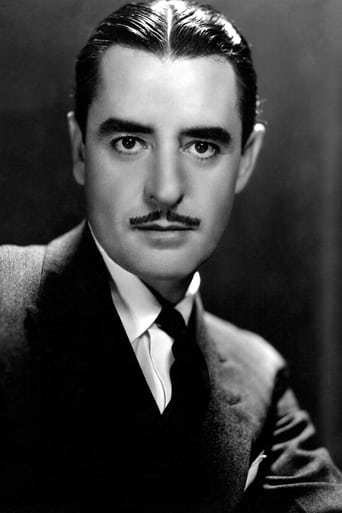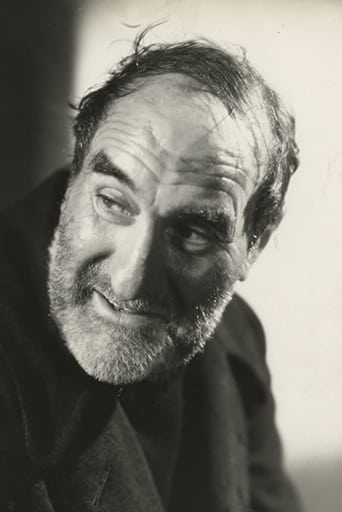Scanialara
You won't be disappointed!
TrueJoshNight
Truly Dreadful Film
Maidexpl
Entertaining from beginning to end, it maintains the spirit of the franchise while establishing it's own seal with a fun cast
marym52
John Gilbert DIDN'T exit pictures because of a high voice. In fact, his voice was a gravelly baritone; not mellifluously romantic, but perfectly suited to the characters he played in his later sound films. It's too bad this was released as a silent.This pre-code desert adventure film features solid performances by the leads (I always perk up when I see Ernest Torrance in the cast list), beautiful photography, and a plot full of tension from shifting power and sexual tension.Gilbert plays a bad good guy-- roguish, gritty, full of dark humor, and willing to play his captors off each other with anything it takes for his survival. One reviewer compares him to Errol Flynn. I can see that, but also the Clark Gable of "Red Dust".A good, suspenseful film with all the advantages of the late silent period.
MartinHafer
Of all the major American studios, MGM was the slowest to switch from silents to talking pictures. The studio head, Louis B. Mayer, insisted that talkies were just a fad...and so they continued making silent films up through 1929. Other studios had pretty much gone all talking by 1929. One of the later silents, and John Gilbert's last silent, was this dandy film "Desert Nights".The film is set somewhere in Southern Africa. You aren't sure of the country but you know that the Kalahari Desert is in the region. This desert plays an important part because the boss of a diamond mine, Hugh Rand (Gilbert) is kidnapped and a fortune in diamonds is stolen by some clever crooks. However, Rand turns out to be the clever one as he ends up taking the crooks for a strange adventure.There really wasn't anything I didn't like about the film. Gilbert is good, as always and the film is well written and exciting. Additionally, the end if smart and works well. Surprisingly, I don't think this film was ever re-made as a talking picture and with such an interesting plot, it should have been.
kidboots
.....at their sheer beauty (in my opinion). If only Mary had stayed out of trouble. In my opinion (again), she was a first rate actress who was being given yet another chance to make good. She had been sacked from the Ziegfeld Follies a few years earlier for "disorderly conduct", she fled to the continent where, under another name, she became a popular film star. Fleeing bad debts she slunk back to America where under yet another name, she was given a Universal contract. Her two biggest successes were "West of Zanzibar" and "Desert Nights" both at MGM, the cream of the studios. If she had knuckled down to work, I feel sure she would have been offered an MGM contract as her talkie films show she had nothing to fear from the mike. But Universal was already tired of her shenanigans and by 1930 had let her go.Lord Stonehill and his daughter, Diana (Ernest Torrence and Mary Nolan) are due to arrive at the Crown Diamond Mine but as Hugh Rand (John Gilbert) jokes she must be cross eyed, bow legged and an old maid as no beauty would come to this God forsaken place. Being Mary Nolan of course she is a raving beauty and Hugh falls for her hard.In reality they are diamond thieves as Hugh finds out when he receives a wire from the real Lord Stonehill saying they have been delayed. This movie is lots of fun as Hugh is taken hostage on a safari. Hugh manages to untie his bonds and proposes to Diana that they both flee and leave the old "Lord" to take his chances - "Diamonds and youth, the world is ours" - he doesn't fall for the line that Steve is her father. Ernest Torrence adds another impressive evil villain to his rogue's gallery. Just when you think his Steve is a bit of a buffoon, one of his gang (who has opted to split the diamonds and head of on their own to Cape Town) staggers back to camp to die, revealing that the rest of the gang are dead because of a poisoned water hole. Steve then admits he did it and a stunned Hugh cries that he is a murderer and a fiend!!!Hugh promises to lead them out of the desert as long as "Baby" is part of the deal. There seems to be a bit of missing footage (I'm thinking a fight scene) because one moment Diana is pleading to Steve that they should give themselves up, seeing Hugh has the gun and the diamonds, the next scene Steve has the gun and has accidentally walked right back to the diamond mine. As for Diana - she has been back long enough to have a shower and to look very cool and inviting, and as Hugh says "I will give you your freedom but you will have to report to me every day - for the rest of your life".This was an excellent film and it had something for everybody. Adventures in the desert, Mary Nolan looking very easy on the eyes as she battled thirst, mirages and fending off the amorous advances of John Gilbert, who looked very handsome in his safari gear. There is even a partial nude scene involving Nolan (who else) when they finally found an oasis that wasn't a mirage. And also Ernest Torrence who boosted any movie he happened to appear in.
rogerskarsten
There's not much distinctive about William Nigh's direction of "Desert Nights," unless you consider anachronisms distinctive. This being a late silent film, you might expect fluid camera work, tracking shots, and other editing techniques that by this time so beautifully conveyed the eloquence of the silent cinema aesthetic. But with the fast approaching obsolescence of the medium it's clear from this film that MGM was only interested in turning out a filler product, and Nigh was willing to oblige. The result is a film that, were it not for the 1929 fashions and automobiles, has the look and feel of early 1920s desert melodrama. In fact, the film's one truly memorable scene, featuring a waltz, depends on the synchronized score for its notability--a sign of the movies' obsession with sound over visual storytelling. John Gilbert, his career by this time quickly slipping through his fingers, plays the hero who is not given the chance to act very heroically. His metaphoric emasculation is evident from the amount of time he spends either tied up at the mercy of his captors or dying of thirst. He is denied almost every opportunity to display his physical prowess or to come to anyone's dramatic rescue--partly because there's no one around worth saving. The plot is full of holes (why didn't the crooks just shoot Hugh Rand instead of taking him with them?), and the unfortunate and abrupt loss of footage at the dramatic confrontation with Ernest Torrence spoils what should have been the climax of all that has come before it. We're left with a rather limp and silly conclusion back where it all started, with Torrence uttering the kind of line that surely inspired every Scooby Doo villain, and Gilbert safely back behind a desk.On a more positive note, mention should be made of Mary Nolan, who brings a certain presence to an under-developed role. She and Gilbert do display chemistry in their scenes together (especially the waltz), and Ernest Torrence delivers a characteristically accessible and natural performance. He is truly one of the most engaging character actors of the silent screen. The print shown on TCM, while truncated, is beautifully preserved, and the synchronized score is generally quite good, again notably in the waltz scene. Finally, the film is worth viewing for John Gilbert. Though this film is ultimately beneath him and can't bear comparison to such greats as "The Big Parade," "The Merry Widow," "The Show," and his appearances with Garbo, he still conveys the wordless charisma that so defined him, but ultimately confined him to the silent screen.

